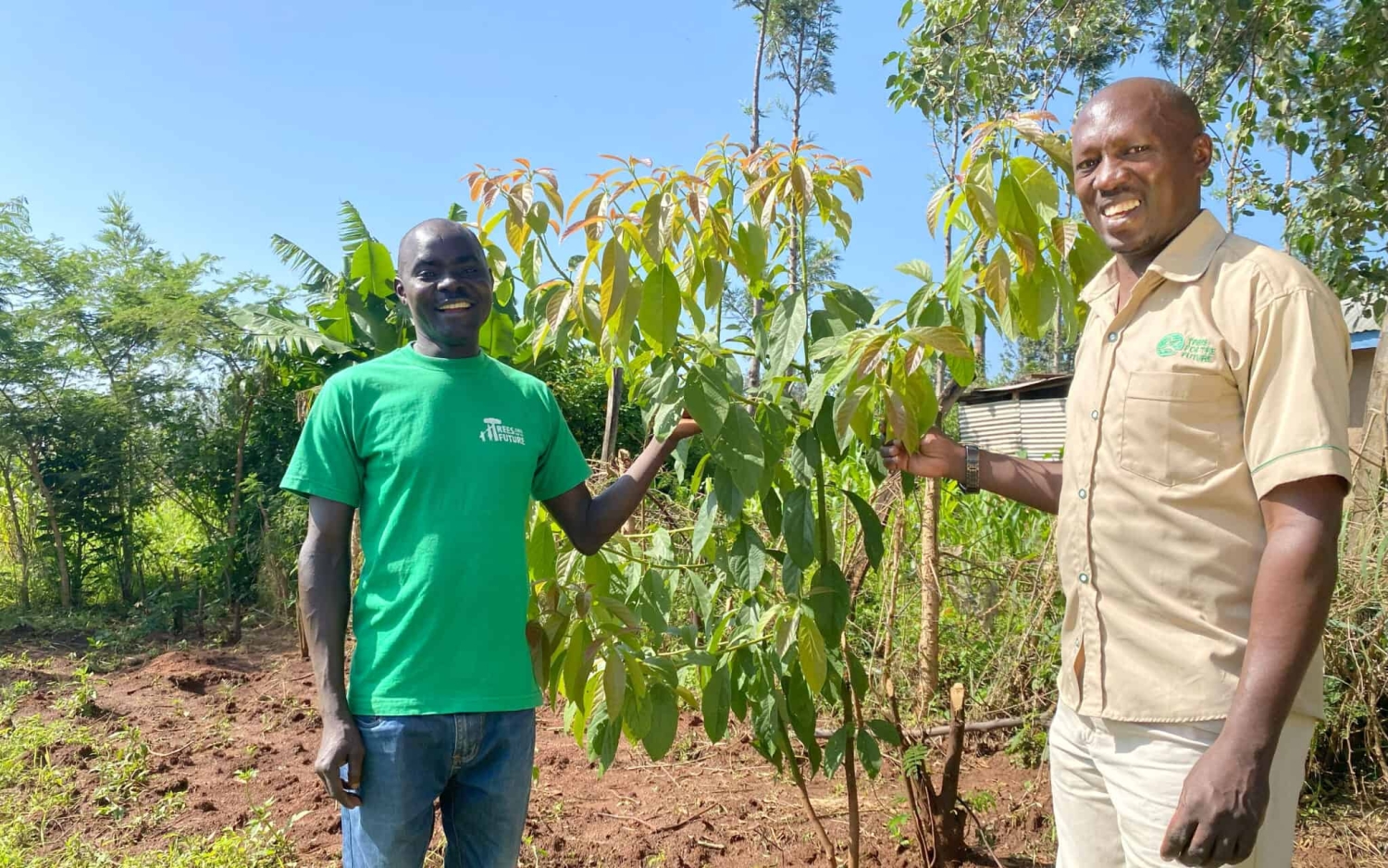
At Eminence Organic Skin Care, we’re bursting with gratitude for everything nature gives us. From fruits and seeds to herbs and flowers, so many plants play an essential role in our health, our diets and, of course, in skin care. We feature potent botanicals in every product, so we’ve seen the power of organics firsthand. With that in mind, we feel it’s only right to give back to the earth that gives us so much. That’s why Eminence Organics created Forests for the Future™ in 2013.
Through this initiative, we plant a tree for every product sold. We also train farmers and support environmental restoration projects in the rural communities where trees are planted. This is all made possible by our generous partner, Trees for the Future, an incredible non-profit organization that improves the livelihoods of impoverished farmers by training them in agroforestry and sustainable land use, while helping to organize the hands-on work to make our dreams a reality.
Let’s meet David Abach, a Kenyan farmer who spoke about the numerous benefits his farm has seen since joining this program, and get a deeper look at the real impact that Eminence Organics and Trees for the Future make.
David’s Story
When David joined the Eminence-sponsored Trees for the Future’s Forest Garden Training Program in 2020, he identified that roughly half a hectare of his farm could be converted into a Forest Garden.
Over the past decade, Trees for the Future has championed a Forest Garden approach. This method uses regenerative farming principles to simulate a natural forest ecosystem within existing farmlands. Forest Gardens are made up of various trees, shrubs, fruits, vegetables and herbs placed strategically to offer each plant the support it needs to sustain itself while replenishing the land with much-needed vitamins and minerals.
Through the education provided by the program, David quickly started learning about sustainable and regenerative agroforestry techniques that could directly benefit his land.
A Better Farm
Farms that incorporate Forest Gardens produce a large variety of healthy, wholesome crops, giving farmers access to nutritious food. This increases biodiversity and the farmers’ income while restoring their land and capturing atmospheric carbon. Speaking on biodiversity, David says, “[My farm] is better today. Previously, I planted only maize and beans. But because of Trees for the Future, I have Cajanus trees and vegetables for getting food.”
David is implementing a number of regenerative agroforestry techniques in his Forest Garden. One such technique is called alley cropping. This method uses rows of trees or shrubs to create alleys that provide the structure needed to grow multiple crops within a limited space. As mentioned, David uses Cajanus (pigeon peas) in his alley cropping to help increase vital nutrients in his soil. This serves as a living fence around the perimeter of the Forest Garden, which not only enriches the soil but also provides animal fodder and serves as a windbreak. “Without the trees … very heavy wind can fell the crops,” causing damage to David’s crop and adversely affecting his quality of living.
Thousands of Trees
In just three years, David has gone from 12 trees on this section of his land to more than 3,300. Though still growing and reaching maturity, these trees are already creating a beneficial microclimate on his farm.
These trees have helped David combat an issue that previously left his crops vulnerable: Kenya’s climate. “During the dry season, there is [a different] climate within the [Forest] Garden,” David explains. While the arid environment can wreak havoc on crops, the presence of trees “helps the crops to not dry so much, unlike when it is just bare.”
Joining the Carbon Market
Through his participation in the Trees for the Future program, David has also gained the ability to join the thriving carbon market. The carbon market refers to a system for buying and selling “carbon credits,” which allow organizations to buy into an environmental project. This raises much-needed funds while allowing corporations to offset their greenhouse gas emissions to mitigate carbon dioxide’s effect on our atmosphere. The trees on David’s farm will let him earn an additional stream of income through carbon credit sales as Trees for the Future Forest Garden farmers in Kenya are able to participate in the carbon market.
Better Soil
Outside his Forest Garden, David has continued to grow maize and beans using traditional methods. The difference between what grows inside the Forest Garden and outside of it is stark.
“There is a big difference in soil quality,” he shares. “If you compare where there are vegetables growing alongside the Cajanus and where there is maize [without Cajanus], you find that the maize is yellow. It shows that there is nutrient deficiency — unlike where I am using compost. I see that the Forest Garden is better.” The Cajanus trees help to enrich David’s land with nitrogen, producing hearty, robust crops that he can sell or use to sustain his family.
A Promising Future
From food production to climate change mitigation, David is using his Forest Garden, created through the work of these initiatives, to build a better life for himself and his 13-person household.
“Before, I had to take money from my pocket to get vegetables. Now, because I get vegetables from my Forest Garden, what I would have used to buy vegetables I can use to buy fish and meat and school items for my children.”
Since David joined the Trees for the Future Forest Garden Training Program, sponsored in-part by Eminence Organic Skin Care, he’s been able to access the education and resources that have made all of this possible. We are thrilled that we played a role in providing David with a stable source of food and income to help him create a better life.
Read more about David’s story here.




